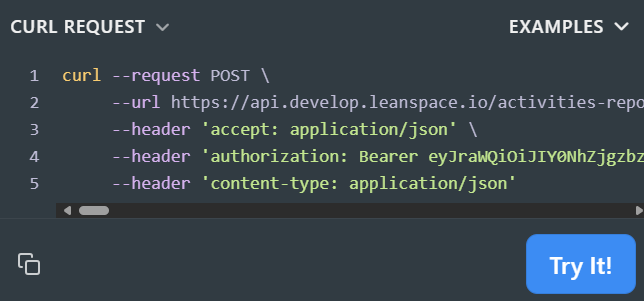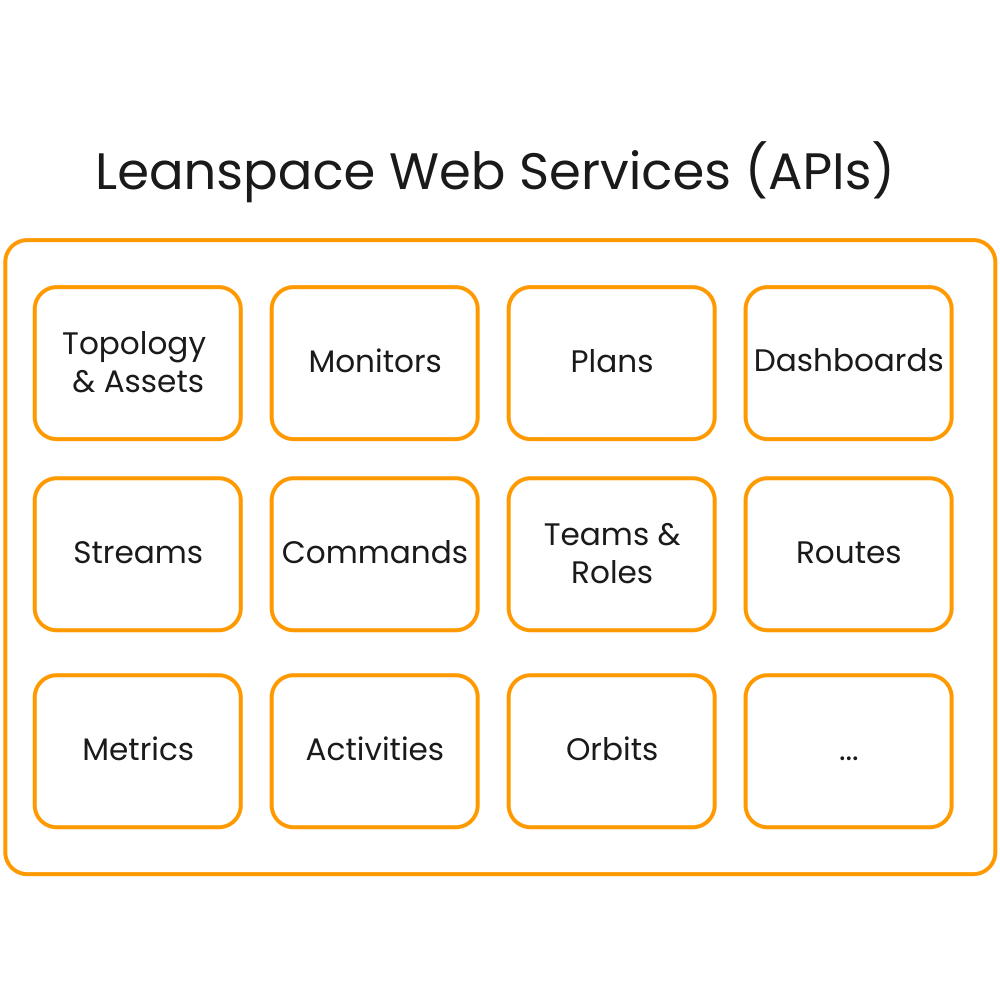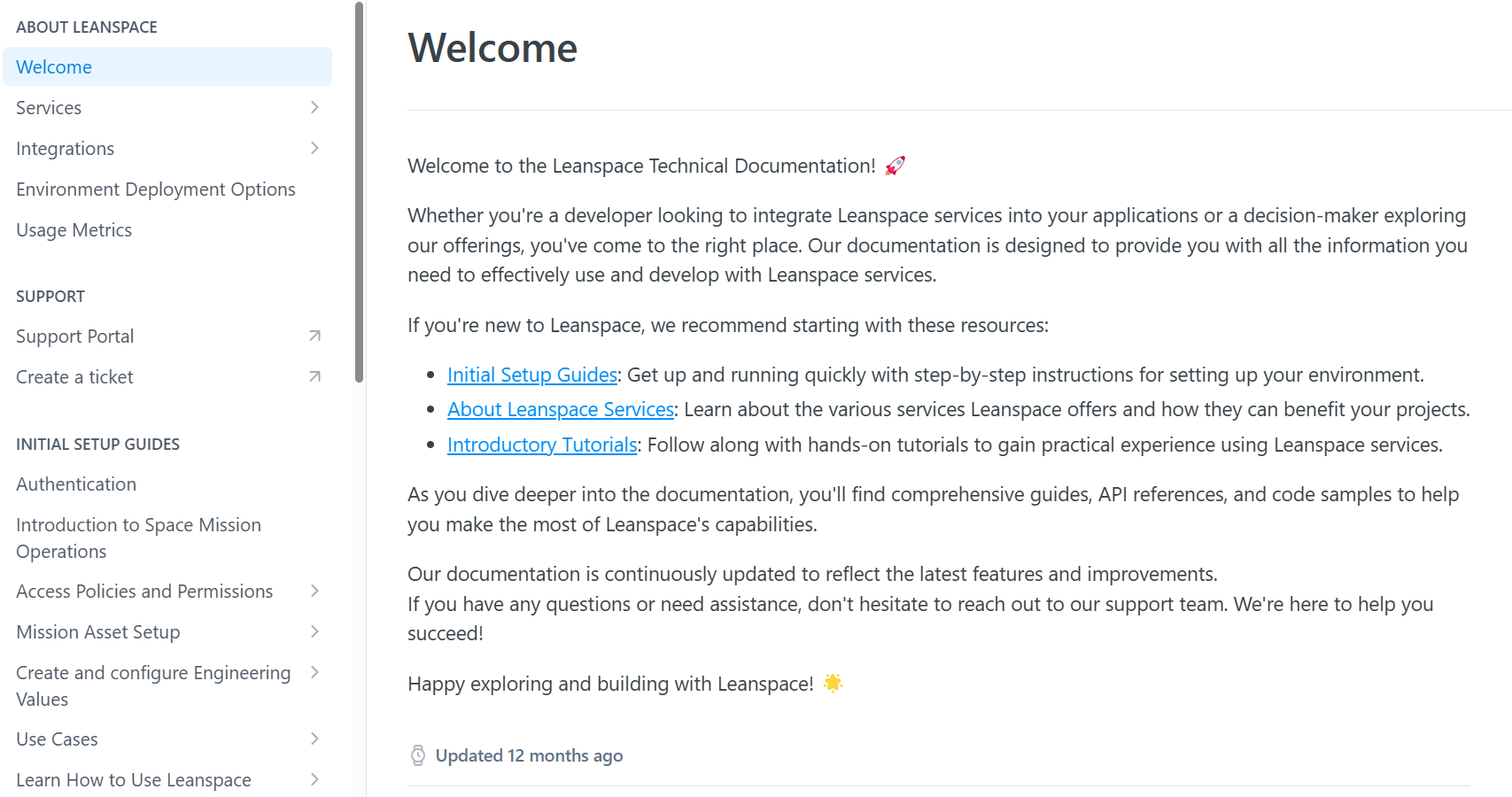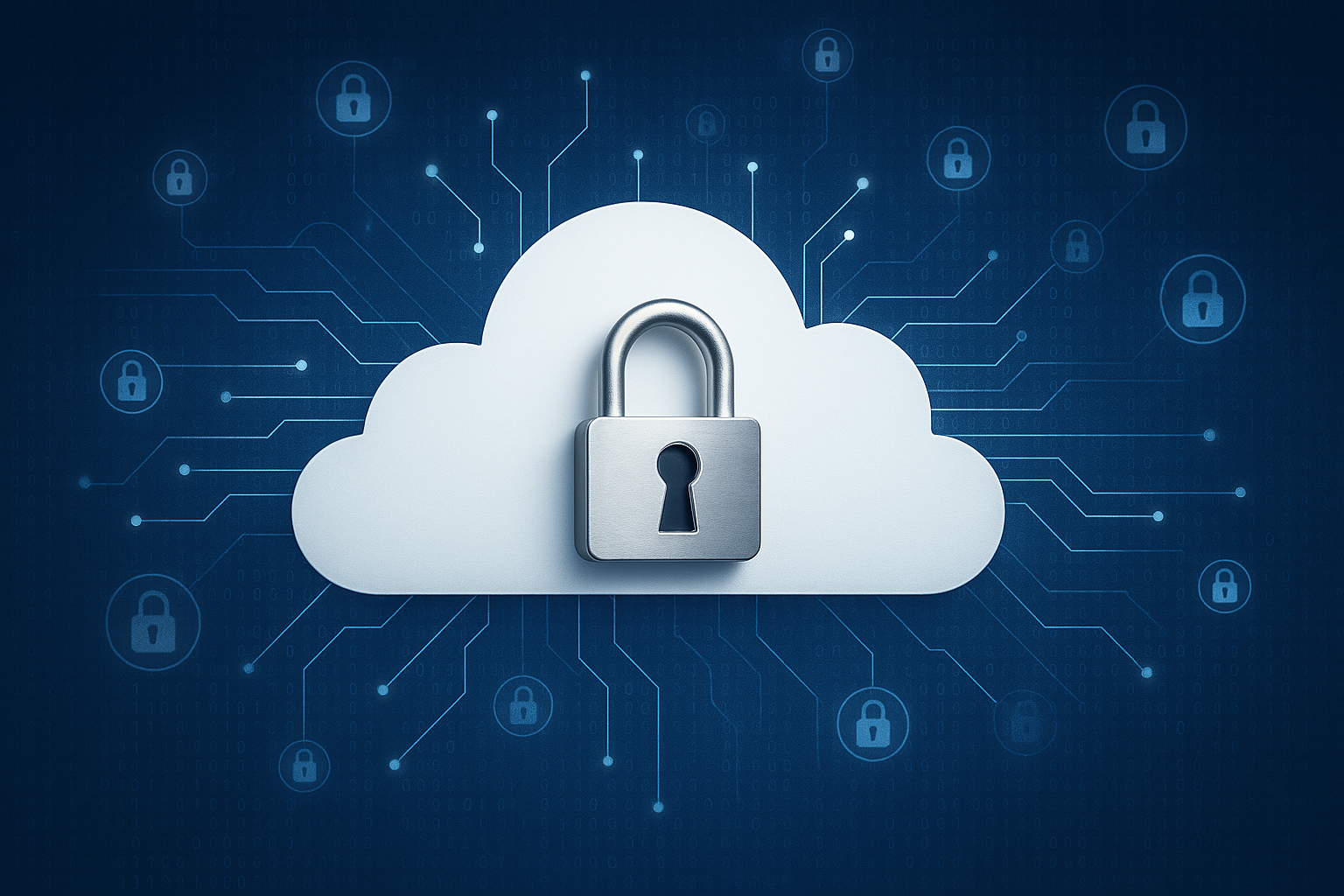Leanspace Architecture/ APIs
The Leanspace API is organized around REST. Our API has predictable resource-oriented URLs, accepts form-encoded request bodies, returns JSON-encoded responses, and uses standard HTTP response codes, authentication, and verbs.


Natively connected
What does it mean to be natively connected?
Leanspace’s Platform has been built with a series of microservices, that can be mapped together using the universal unique identifier (UUID).
The impact of this is that a connected group of entities within Leanspace work harmoniously together to achieve your desired outcome. This lowers the complexity of your setup, reduces maintenance and avoids the risks of human error.
Let’s explore an example of this in practice.
Typically your spacecraft or payload will be a foundational entity. It can be mapped to many other entities, such as a metric via an API.
When you downlink from your asset, via a GSaaS provider, the telemetry will store the latest engineering values (like your housekeeping data), and automatically keep the spacecraft asset up-to-date, without requiring an additional API call.


Generic functions of a ground segment
Foundational APIs for ground segments
Our platform is built with 25+ generic APIs, deployed as cloud-native services on top of a scalable cloud infrastructure.
These provide all the generic functions of a ground segment and have been designed with well-defined functional boundaries to serve specific aspects of ground segment operations.
Each API serve different purposes, for example the Commands API covers specific commanding and tasking of your spacecraft assets.
Like all of our APIs, Commands have been built with flexibility, supporting operational use cases including command sequencing, verification, and release approval, while remaining flexible to match your mission’s protocol stack and operational procedures.


Compatible with external APIs
How do integrations work with Leanspace?
Integrations work in two ways with the Leanspace Platform: through specialized integrations with our partner network, such as our GSaaS providers. The other way are the systems that you would like to connect to the Leanspace Platform.
To access our specialized integrations, it’s as simple as how you would access any of our APIs.
To connect Leanspace with 3rd party systems, you need to create specialized user accounts that handle the flow of data between an external system and Leanspace.
With the built-in, strict, granular access policies, you can define the exact APIs and parameters that can interact with your Leanspace powered ground segment.
{
"createdAt": "2025-04-30T12:24:45.223Z",
"createdBy": "50486a8d-490c-45a2-a0b9-903f5f730bc7",
"domainUrl": "sandbox.api.third.party.system",
"id": "3fa85f64-5717-4562-b3fc-2c963f66afa6",
"lastModifiedAt": "2025-04-30T12:24:45.223Z",
"lastModifiedBy": "50486a8d-490c-45a2-a0b9-903f5f730bc7",
"name": "Third Party System",
"status": "CONNECT"
}
Comprehensive documentation
Documentation designed for space engineers
Documentation is the key to the sanity of our customers and it is something that we take pride in.
You will find getting started guides with detailed tutorials for every microservice and off-the-shelf product, giving you the opportunity to expand your learning of the platform and overcome any challenges.


Security and access management
Enterprise Grade Security
OAuth2 and token-based access controls ensure you have absolute control in who or what can access the Platform’s APIs and your data running through them.


Technology that's designed to solve real-world problems
Escape vendor lock-in
Leanspace provides you with the application’s source code, giving you full control over who can modify it—whether it’s the Leanspace team, yourself, or any third party.
Embrace cloud technologies
Leanspace gives you the freedom to benefit from cloud native architecture in a safe manner that complies with your needs. Deploy on-premise or on your choice of public cloud providers.
Improved operations
Leanspace allows you to standardize and centralize data, enabling you to automate satellite and ground segment operations across all your assets, reduce human errors, and cut costs.
De-risk future missions
Leanspace gives you the power to adapt your ground segment, extend the value of existing assets, and run multiple missions in parallel without the need for duplication.
Get Started Today
Learn more about the technology that powers Leanspace, explore our wide range of off-the-shelf products, or book a demo with our experts to get started on your journey

